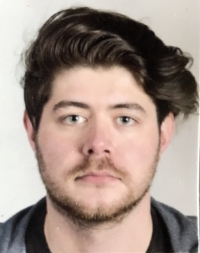SECONDMENT
DESIGN OF HYBRID GLASS/LIQUID-CRYSTAL OPTICAL SYSTEMS
FROM : UNIVERSITÉ DE BORDEAUX (FRANCE)TO : UNIVERSITÉ LAVAL (QUÉBEC)
FROM : 28 JANUARY 2022 TO : 20 DECEMBER 2022
Involved Work Packages :
![]()
![]()
RESEARCHER
OBJECTIVES
The secondment is part of a general project which is the design of hybrid glass/liquid-crystal optical systems. These systems are made by functionalization of ionic glass surfaces, via thermal poling, which are then used to produce µ-meter thick multi-domain liquid-crystals cells. It is of importance then to study the influence of such electrically treated glass surface on liquid-crystals alignments.
After exploring several possibilities of liquid-crystals orientations, via poled µ-structured glass, following work will investigate the durability of the treatment, the reorientation mode of the liquid crystal, the glass anchoring energy…
Also, the combination of PGLC (poled glass liquid-crystals) cell with ITO layers, in order to study the dynamic properties of LCs in contact with poled glass, needs to be conducted, and opens the possibilities to make novel light manipulation. This might initiate the conception and production of an hybrid electronic device using poled glass technology, in combination with liquid crystals, and ITO electrodes.
All the tasks listed above can be done at COPL, Pr Galstian’s team being specialized in such characterizations and liquid-crystals devices production.
TASKS
- Poled glass liquid crystal cell characterization
- Poled glass ionic structure analysis with EDS
- Cell and electrode design for future applications (optical switches, displays)
- Conception and production of an hybrid optical device
RESULTS
At the end of this first mobility, the project has reached its minimum objectives, that is to produce a method to characterize the anchoring energy of poled glasses as substrates for liquid crystals cells. This leads to the characterization of several benchmark LCs cells. This knowledge and material are transferable from COPL, Université Laval to ISM, Université de Bordeaux. The remaining tasks, that are to characterize the new functionalized material, can be achieved in the next stay planned in Québec.
Scientific highlights: a new functionality on a glass surface that can be used as a substrate for liquid crystals orientation.
The novel use of this functionalized glass led to the development of a characterization method that allows the access to qualitative measurement of its anchoring energy on liquid crystals. Through improvement of the method, quantitative estimations can also be made.
